As a physical therapist and avid hiker, I’m often asked to clarify the difference between hiking and trekking, which many of my clients and fellow outdoor enthusiasts are curious about.
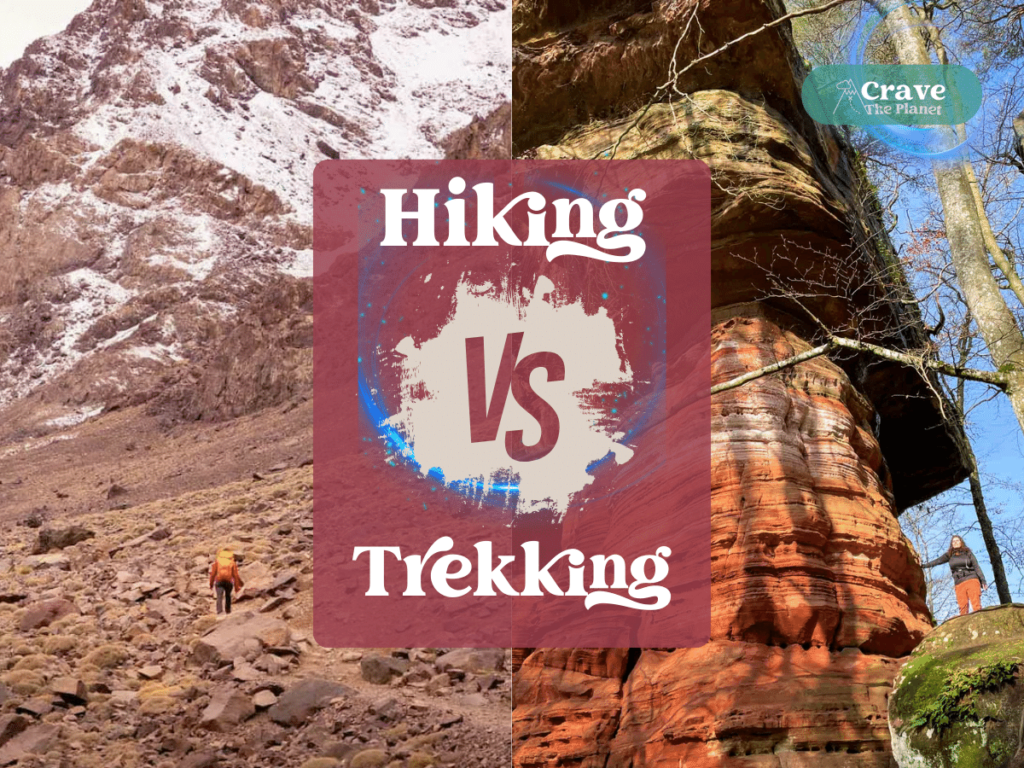
Understanding the difference between hiking and trekking can help you decide which activity suits your interests and physical condition best.
Author’s tl;dr:
Trekking and hiking often overlap, but hiking is generally less rigorous and of shorter duration. As a physical therapist, I always recommend people practice hiking before trying a longer “trek” so they are physically and mentally prepared.
➡️ Read more about the most famous trek in Europe: The Tour du Mont Blanc.
Hiking
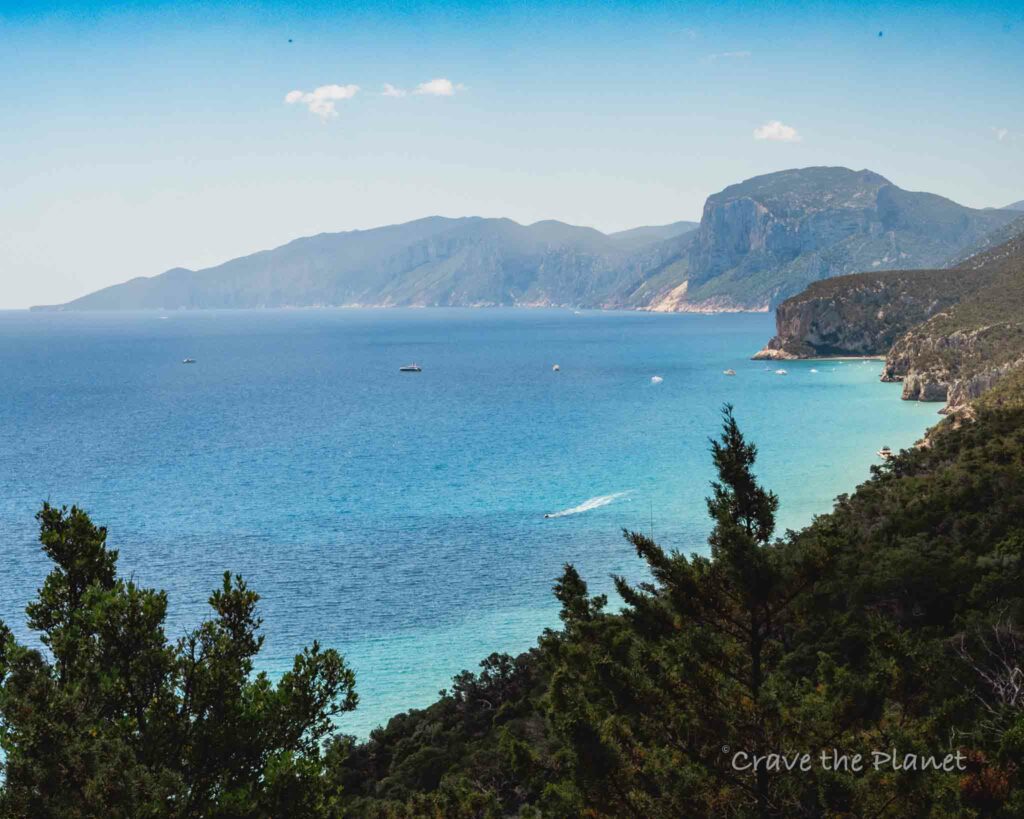
Hiking is a leisurely pastime where you embark on long walks in natural settings on designated paths or trails.
Often considered a day activity, hiking presents an opportunity to enjoy nature without straying too far from civilization.
Trekking
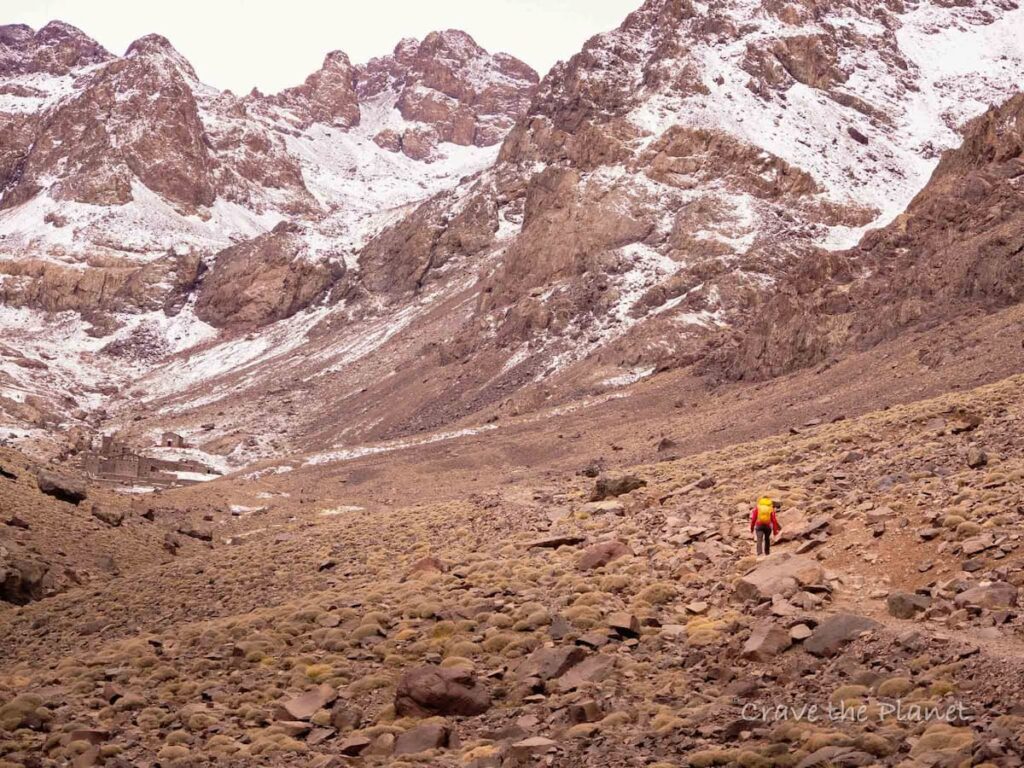
On the other hand, trekking pushes the boundaries of traditional hiking by immersing you in more remote environments, typically for several days.
Trekking involves traversing through wild and sometimes uncharted territory, where the challenge lies not only in the distance covered but also in the terrain’s ruggedness and the need for self-sufficiency.
While hiking might see you return home on the same day, trekking often means pitching a tent or seeking shelter in mountain huts or lodges along your route.
Trekking in Europe often mixes cuisine, culture and comfortable adventures.
Become a European Adventure Travel Insider in Just 5 minutes
✨Unlock Europe’s best-kept secrets with our free bi-weekly newsletter.
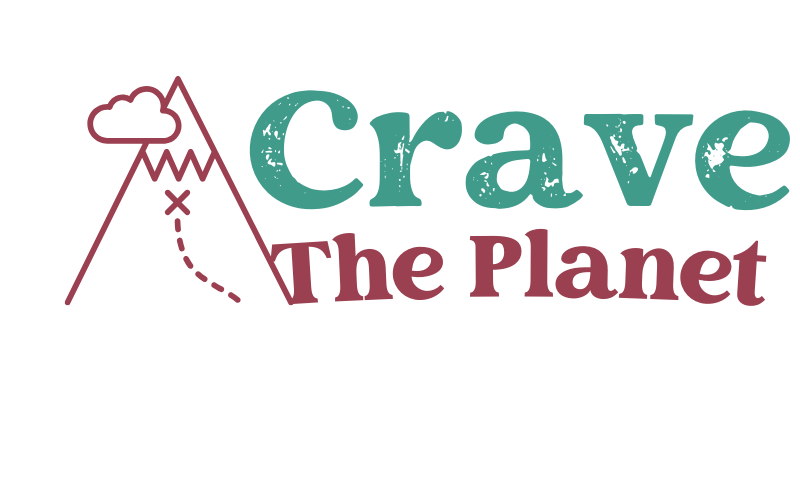
What is the difference Between Hiking and Trekking?
When you set out to explore nature, it’s essential to understand the activities that beckon you outdoors.
Whether you’re on a casual day walk or embarking on a multi-day journey, knowing the distinction between hiking and trekking will enhance your experience.
What is Hiking?
Hiking refers to the act of walking through natural environments on hiking trails or footpaths.
Your hike can be a brief, leisurely activity that lasts a few hours, or it might extend to an overnight adventure.
Typically, when you’re hiking, you’re following marked trails within forests, mountains, or parks, enjoying the biodiversity and peacefulness that nature has to offer. Essential gear would include:
- Good hiking shoes
- Appropriate clothing for the weather
- Water and snacks
- Basic first aid kit
What is Trekking?
Trekking, on the other hand, is a more intense form of hiking. It usually involves longer distances and more challenging terrain that takes you further into the wilderness.
Treks can last for several days and often require more equipment, as you may traverse through areas without defined paths.
During trekking, you might find your limits tested as you navigate through remote areas, potentially without the comforts found on established hiking trails.
Hut to Hut Hiking
For those who enjoy multi-day hikes but prefer not to carry camping gear, hut to hut hiking offers a unique experience.
You’ll hike from one hut to the next, where basic accommodations provide a place to rest without returning to a base camp each day.
These huts often sit along established trails and provide the bare essentials for comfort, allowing you to carry a lighter pack and cover greater distances each day.
3 Key Differences
When you’re planning an outdoor adventure, understanding the key differences between hiking and trekking can help you prepare adequately.
⛰️ Looking for an epic yet accessible hiking travel adventure?
Unlock the secrets of hut-to-hut hiking in Europe with our FREE course! Transform the way you trek and prepare for the journey of a lifetime. Try my course What to Expect Hut to Hut Hiking to reduce fear and answer all your questions.
Enroll Now for FreeHere’s how these activities vary in terms of duration and distance, terrain and difficulty, and the gear you’ll need.
1. Duration and Distance
Hiking typically refers to shorter distances; you can embark on a hike that lasts a few hours to a full day. It’s often on well-marked trails.
Trekking demands more time, stretching over multiple days and often taking you far away from established trails. It requires a greater commitment to covering longer distances.
2. Terrain and Difficulty
Hiking involves less challenging terrains generally. You’ll traverse paths and trails that are accessible and well-trodden.
Trekking introduces you to more arduous conditions — remote wilderness, possibly unmapped areas, and difficult terrain that tests your endurance.
3. Gear and Preparation
For hiking, essential gear includes:
- A sturdy pair of hiking boots
- A backpack for essentials like food and water
- Navigation tools such as a map and compass
Trekking requires more extensive preparation, with gear that encompasses:
- Trekking poles and more robust boots
- A tent for overnight stays
- A larger backpack to hold additional food, water, and clothing for varying conditions
- A GPS device may be necessary for navigation in remote areas
Physical and Mental Benefits
Engaging in hiking or trekking can lead to substantial health and mental benefits. These activities not only bolster your physical fitness and endurance but also contribute to your emotional well-being.
Health and Fitness
When you hit the trails, you are undertaking a cardiovascular workout that helps you burn a significant number of calories, enhancing your overall health and fitness.
For example, trekking can burn over 500 calories per hour depending on the intensity and your weight.
The varied terrain encountered improves your balance and works various muscles in your body, from your core to your legs.
Additionally, regular outings can lead to better blood pressure regulation and bolstered endurance, laying the groundwork for a healthier lifestyle.
- Calories burned: 500+ per hour (varies based on trek intensity)
- Muscle groups worked: Core, quads, hamstrings, calves
- Health improvements: Lower blood pressure, increased endurance
Related👉 Training Plan for Hiking
Emotional Well-being
The benefits of hiking and trekking extend beyond physical health, as they also promote your emotional well-being.
The act of engaging with nature while hiking can alleviate symptoms of stress, depression, and anxiety, by providing a tranquil environment for introspection and mindfulness.
This natural therapy can elevate your mood and decrease the risk of mental health challenges.
Regular exposure to such environments while trekking or hiking helps maintain a balanced and calm mental state, offering a reprieve from the daily grind.
Related👉 Best Hikes in Europe
Planning Your Outdoor Adventure
Proper planning is crucial for a successful and enjoyable outdoor excursion, whether you’re aiming for a leisurely hike or a challenging trek.
Consideration for accommodations, trail selection, and gear are imperative to ensure your adventure aligns with your expectations and preparedness.
Accommodations
For multi-day hikes or overnight treks, accommodations are a vital aspect of your trip.
Camping gear such as a tent and sleeping bag should be light enough for transport yet robust to protect you from the elements.
Identify camping locations along your route, and confirm if you need to reserve spots in advance.
Always adhere to Leave No Trace principles to minimize your impact on the natural environment.
Choosing the Right Trail
When selecting a trail, consider the difficulty, weather conditions, and season to ensure it is appropriate for your training level.
Use maps and resources from local hiking clubs or parks to find a trail suited to your desired experience.
Whether you’re after a tranquil forest path or a more demanding mountainous challenge, accurate navigation helps to prevent potential mishaps.
Essential Hiking and Trekking Gear
Your gear list should include the following essentials:
- Navigation: map, compass, GPS device
- Sun Protection: sunscreen, sunglasses, hat
- Insulation: extra clothing appropriate for season and altitude
- Illumination: headlamp or flashlight (with extra batteries)
- First-Aid Supplies: pre-made kit or personalized
- Fire: matches, lighter, firestarter
- Repair Kit and Tools: duct tape, knife, gear-specific parts
- Nutrition: extra food
- Hydration: water bottles and/or hydration system, water treatment supplies
- Emergency Shelter: tent, space blanket, tarp
For trekking, expand your gear to include:
- Trekking Equipment: high-quality hiking backpack, poles, and other gear designed for rugged terrains and heavier loads
- Specialized clothing and footwear for extended trips across varied terrain
- Wildlife safety items (bear spray, noise-making devices, etc.), especially important if you’ll be in remote areas
Always tailor your gear to the specifics of your destination, and remember to train with your full pack to ensure comfort on the trail.
Planning your trip?
- 🏨 Book your perfect stay on Booking.com
- 🎢 Make your trip more exciting with GetYourGuide
- 🚗 Hire a car with Discover Cars
- ✈️ Find cheap flight tickets with WayAway
- 📲 Buy eSIMs with Airalo
- 🥾 Get off the beaten tourist path with Fully Planned and Booked Self-Guided Hut to Hut Hiking Trip
- 🥾⭐️ Step into social adventure with Guided Group Adventure and Hiking Tours in Europe with Local Guides.
Frequently Asked Questions
If you’re looking to understand the nuances between various forms of outdoor walking activities, such as hiking and trekking, the following frequently asked questions will provide clarity on footwear, equipment, and the defining characteristics of each activity.
What type of footwear is appropriate for hiking versus trekking?
For hiking, you’ll want durable and comfortable footwear suited to well-defined trails. This typically means lightweight, supportive boots or trail runners.
In contrast, trekking requires sturdier boots with excellent support and grip to navigate more challenging and often less-established terrain over multiple days.
How do hiking and mountaineering differ from trekking?
Hiking usually involves day trips on trails or in the countryside. Mountaineering involves climbing mountains, often with specialized equipment and technical skills.
Trekking is more extended than hiking and can involve rugged terrains that are less traveled, usually lasting for several days.
What equipment is essential for a trekking expedition?
For a trekking expedition, you must have a reliable backpack, a sleeping bag suitable for the climate, a tent or other appropriate shelter, and navigation tools such as a map and compass or GPS device.
It’s also crucial to have a first-aid kit and possibly a water purification system or supplies.
What distinguishes trekking from simple trail walking?
Trekking takes you through more challenging environments and for a longer duration than simple trail walking. It often involves navigating rough paths or even forging new trails in remote regions, requiring self-sufficiency and preparation for various conditions and terrain.
In what ways do hiking and backpacking differ?
Hiking typically refers to day outings on trails or through natural habitats, requiring minimal equipment.
Backpacking, however, involves carrying all necessary gear for camping overnight in a backpack and often covers longer distances than a traditional hike.
What defines an activity as trekking?
Trekking is defined by its duration and the ruggedness of the terrain.
Unlike a day hike, trekking usually spans several days.
It often goes through unmarked or challenging environments, requiring more equipment, preparation, and physical condition to complete the journey.
Craving Mountain Adventure?
Craving a Hut to Hut Hiking Adventure?
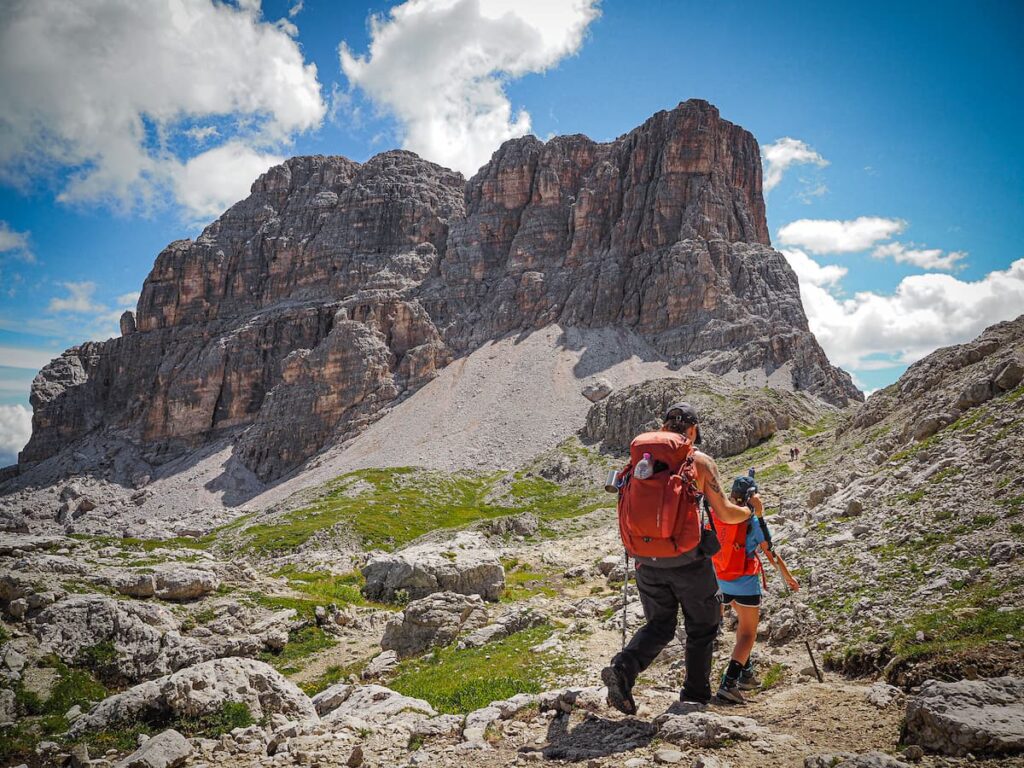
Hut to Hut Hiking in the Dolomites Free Course
Curious about hut-to-hut hiking in the Dolomites, but not sure where to start or what to expect? Sign up for our newsletter that simplifies and educates so you can focus on the views and vino. Get curious, get ready, and let’s get started! Sign up here👇🏼
- Free Email Course to Learn : Everything You Need to Know About Hut to Hut Hiking
Thanks for reading! I hope you enjoy rambling around the Rhineland Palatinate forest and catching some outdoor history and culture. How cool is that?
Have you experienced a cool trail nearby? We would love to hear how it was over on our facebook group Plan Hiking Adventures in Europe.
Thanks for reading this article on the difference between hiking and trekking. I hope it helps you plan your next adventure.
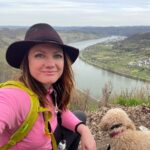
Author profile: Morgan Fielder is a Doctor of Physical Therapy and passionate hiker who believes in exploring the world on foot with good food. Follow her journey as she shares science-based hiking tips and advocates for sustainable tourism.
